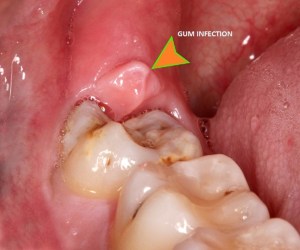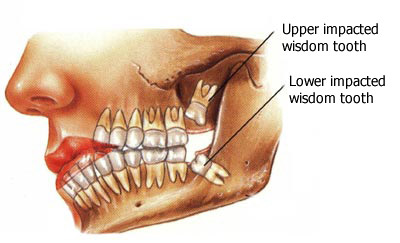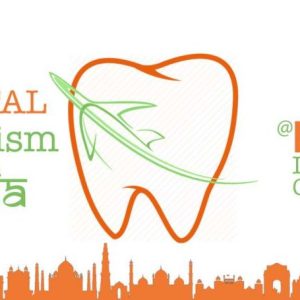“let his wisdom teeth grow, he will be wise enough” its said very often,
Why are we talking about ‘wisdom’ today! A few of you might have guessed it, but for the many of you who are still in this dilemma, we will reveal the true story behind this.
We all get our wisdom tooth by 21 yrs of age, and of course think we have grown wiser. But the tooth itself isn’t that wise. Recent researches have proved that 72% of the Indian population has at least one impacted (entrapped) wisdom tooth.
Impacted Wisdom teeth
These are the wisdom teeth that do not erupt completely into the mouth. There are many reasons for this interrupted process. One such reason is the proportional differences in the sizes of teeth to the jaws. If the size of teeth is more than that of jaws, there arises a problem, resulting in improper eruption of the wisdom teeth into the mouth. Because the wisdom teeth are the last to erupt, and when there is no enough room in the jaws to accommodate them, the wisdom tooth gets stuck in the jaws. Also genetic factors dictate the eruption of teeth, the size of the teeth and jaws is also controlled by the gene. Hence, there won’t be enough space for all the teeth to get accommodated.
Causes of Impacted teeth
- Because of the prolonged retention of the milk teeth, impaction may result
- When the tooth germ (which gives birth to tooth) is malposed (directed wrongly) impaction is the end result.
- When there is a deficient jaw bone, impaction is inevitable
- When there are any tumors in the jaw, impaction may be the result.
Radiographic detection (X Rays)
Standard radiographic procedures to localize the unerupted teeth are Orthopantomograph (OPG), tube shift method, periapical and occlusal films, panoramic view and computed tomography (CT).
Pericoronitis

When a tooth is partially impacted with a large amount of skin (soft tissue) over the surface of the tooth, the patient frequently has swelling and entrapment of food that results in infection and pus formation in the soft tissue. Along with pain, halitosis (bad smell in the mouth) also is the problem a patient faces. Pericoronitis may initially present as a very mild infection, but negligence may result in severe infections. In its mildest form pericoronitis is present as a localized swelling and soreness, which can be treated by curettage and irrigation. In severe cases, swelling of the face is also evident, where tooth extraction after antibiotic administration is suggested.
The impacted wisdom tooth not only gets decayed due to food entrapment, because of inability of the patient to clean the partially erupted or impacted tooth, but also renders the decay of the adjacent tooth.
Along with the decay of the adjacent tooth it also exerts uneven forces on the adjacent teeth, resulting in pushing of the teeth in the jaw and overlapping of the teeth occurs.
Effects of Impacted teeth
Impacted teeth can cause a number of problems if left in place. These problems or their treatment may require extensive surgery, loss of additional teeth, or other tissues.
Some of the complications from impacted teeth include infection with swelling of the gums, mouth, and face, stiffness of the jaws, and pain which may cause serious illness. It leads to damage to adjacent tooth roots. Formations of large cysts which may destroy areas of the jawbones occur. Referred pain to the jaws, earaches, and headaches also is the effect. If partially erupted, the surrounding gums may become food traps causing gum disease and dental caries in an adjacent tooth.
Treatment
The impacted teeth can be treated with early diagnosis and surgical removal before any complications occur. Apart from prevention from the complications already discussed, wisdom teeth may also need to be removed prior to orthodontic treatment or orthognathic surgery (correction of jaw deformities).
Surgical procedure is involved in the removal of impacted teeth:
The type of anesthesia to be used will be discussed by your surgeon at your preoperative consultation. An incision is made in the gum tissue, overlying bone is removed, and the tooth adequately exposed. It may be removed in one piece or cut into sections depending on its position and the size and shape of the roots.
Gums are sutured in place and gauze pressure packs are placed over the surgical area to control any oozing blood.
FMS DENTAL
Related Posts
- 2 years ago
- 2 years ago





